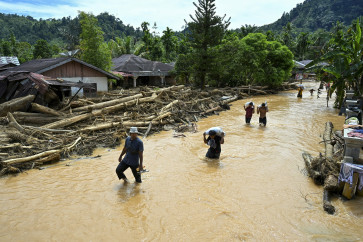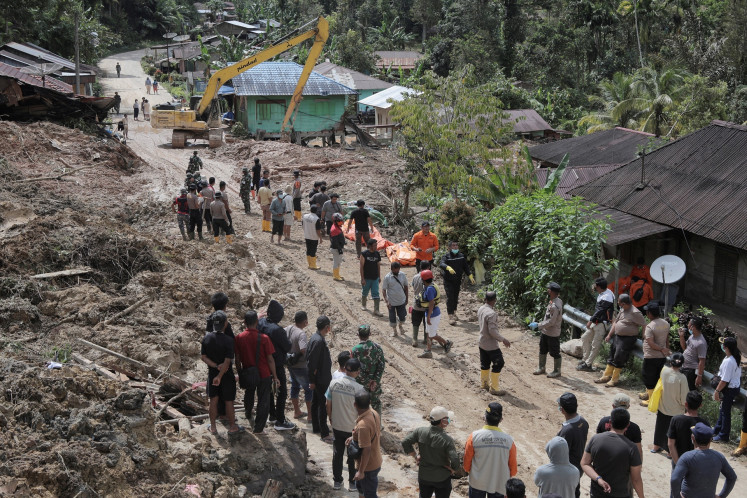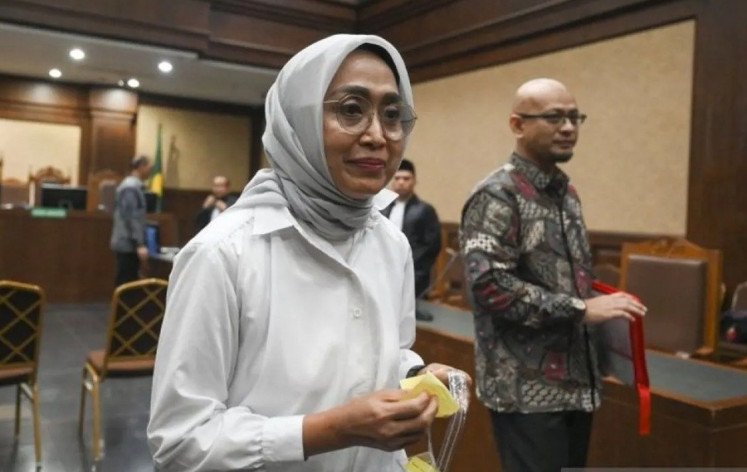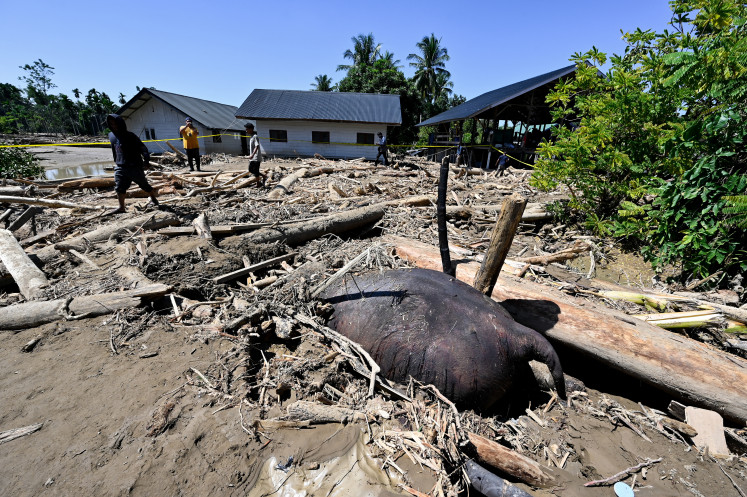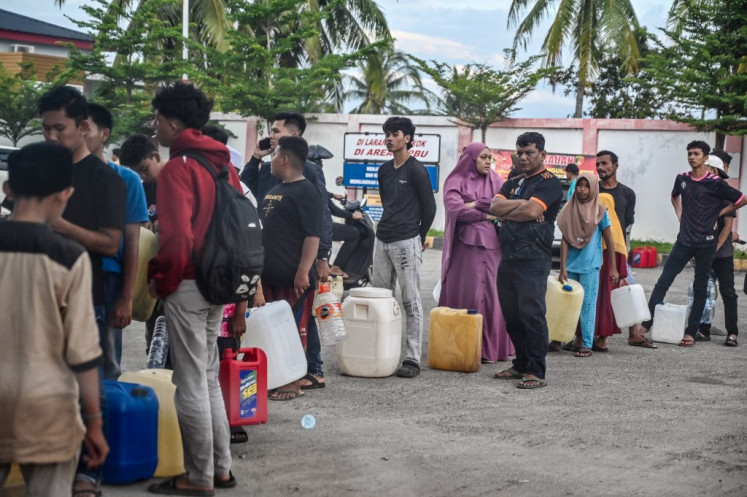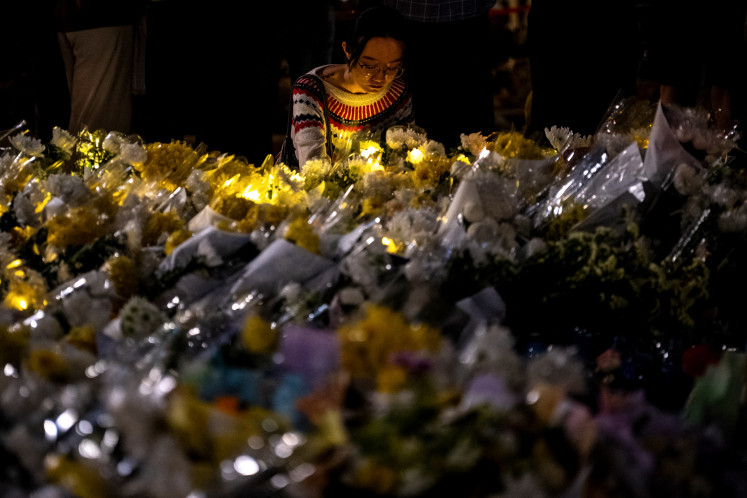Popular Reads
Top Results
Can't find what you're looking for?
View all search resultsPopular Reads
Top Results
Can't find what you're looking for?
View all search resultsSoutheast Asia must lead in fighting neglected tropical diseases
The fight against neglected tropical diseases is a fight for equity, productivity and long-term security. Southeast Asia can lead the way.
Change text size
Gift Premium Articles
to Anyone
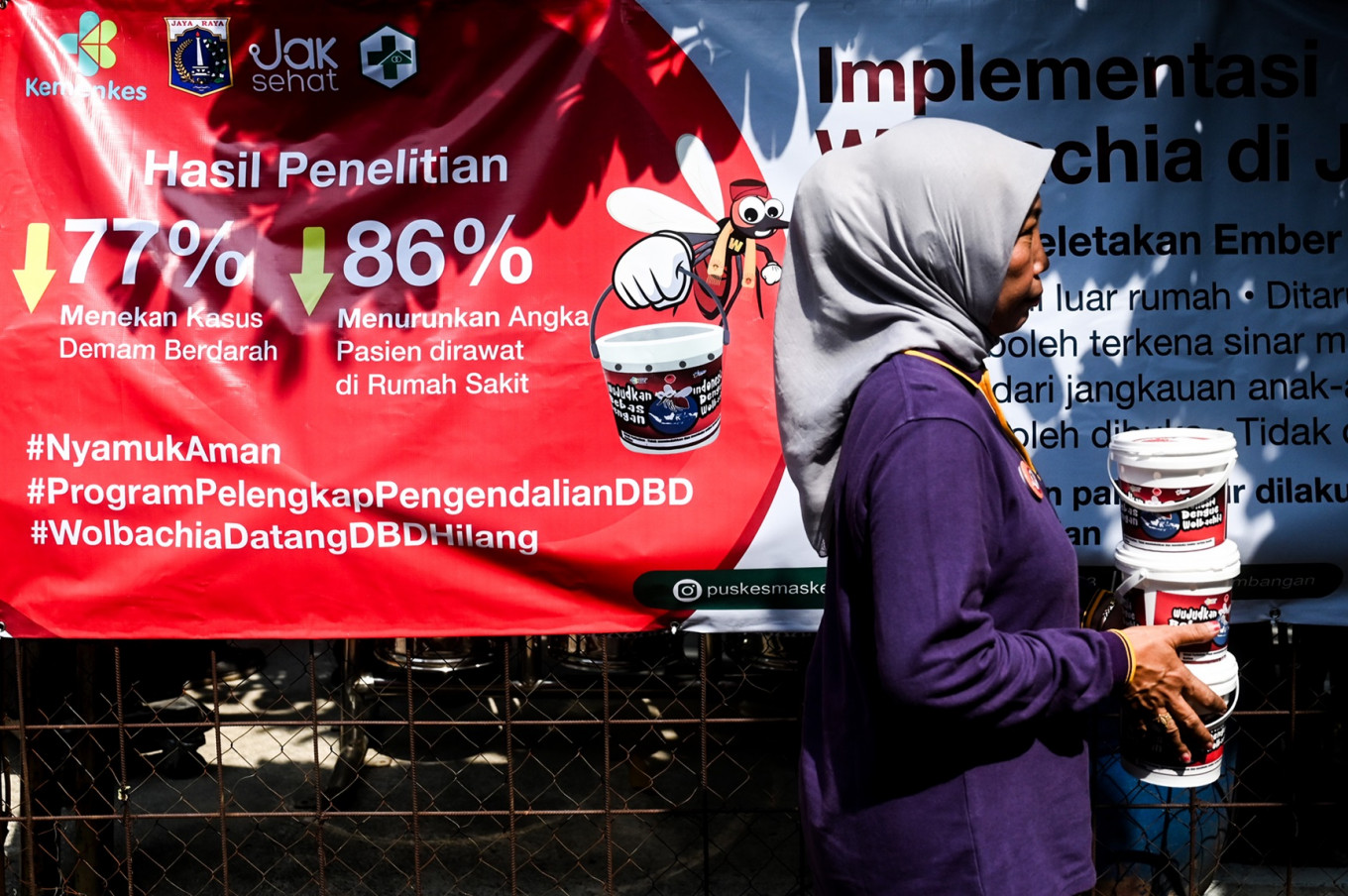 Tackling disease: A health worker carries buckets filled with mosquito eggs infected with Wolbachia bacteria on Oct. 4, 2024, in Kembangan district, West Jakarta. The Jakarta administration released the Wolbachia-infected mosquito eggs in an effort to control the spread of dengue in the city. (Antara/Rivan Awal Lingga)
Tackling disease: A health worker carries buckets filled with mosquito eggs infected with Wolbachia bacteria on Oct. 4, 2024, in Kembangan district, West Jakarta. The Jakarta administration released the Wolbachia-infected mosquito eggs in an effort to control the spread of dengue in the city. (Antara/Rivan Awal Lingga)
N
eglected tropical diseases (NTDs) are a persistent public health threat, and tackling them is not just a moral obligation, but a smart investment.
NTDs are a group of infectious diseases that mainly affect poor people in tropical and subtropical regions. These diseases are called “neglected” because they have received less attention and fewer resources than other major health issues, despite affecting over a billion people worldwide.
NTDs disproportionately affect the poorest communities in low- and middle-income countries (LMICs) where they lock people in cycles of poverty by hindering physical and cognitive development, reducing school attendance and limiting economic productivity.
Wealthier nations experience far lower rates of these diseases. Yet it’s in LMICs that cost-effective interventions like improved water, sanitation, hygiene and vector control can deliver the greatest return as these methods can be used to limit or eliminate insects that spread diseases to humans.
While vaccines are one of the most powerful tools for disease prevention, there are still no vaccines for most NTD. Progress has been slow, largely due to fragmented funding and limited investment in research. This gap continues to leave millions vulnerable.
To address this, we helped establish the UK-South East Asia Vaccine Manufacturing Research Hub (UK-SEA Vax Hub) in 2023 to reduce the burden of infectious diseases in LMICs, with a special focus on Southeast Asia. Its mission is to strengthen regional capacity in vaccine research, development and manufacturing. Dengue and rabies, both of which are persistent NTDs, are among its priorities.
The urgency of this work is underscored by the growing threat of dengue. Between 2015 and 2019, dengue cases rose by 46 percent in Southeast Asia. Countries like Indonesia, Myanmar and Thailand are among the most affected globally. This region accounts for more than half of the world’s dengue cases.
While vaccines are available, their use is limited by strict eligibility criteria based on age, infection history and local disease patterns. This leaves many people without protection.
What’s urgently needed are more effective, affordable and widely accessible vaccines. But vaccines alone won’t solve the problem. Combating dengue and other NTDs requires an integrated strategy, particularly in poor countries with limited health infrastructure.
To stop the spread of diseases like dengue, it’s not enough to just treat people or use vaccines. You also need to control the insects that carry and spread the disease; in this case, mosquitoes. That includes actions like removing standing water where mosquitoes breed, using insecticides or installing window screens and bed nets.
These interventions, driven by local action, are just as essential as biomedical advances. Together, they build a more sustainable and resilient defense against mosquito-borne diseases.
For decades, public health initiatives in low-income countries were largely funded by wealthy countries through development aid, international donors and philanthropic foundations. But with shifting global priorities and tightening budgets, it’s increasingly clear that this model is no longer sustainable.
Long-term health security must be led from within. That means a shift in mindset. Low-income countries must see themselves not just as aid recipients, but as innovators, implementers and investors in their own health futures.
This transition is already underway. The UK-SEA Vax Hub has evolved beyond its original research remit. By embedding its work within the broader regional health agenda, the hub is promoting government ownership and regional collaboration: Critical steps in building stronger, more self-reliant health systems.
While progress is promising, major challenges remain. One of the most pressing is the need to develop a new generation of public health leaders across Southeast Asia. We need people who can lead research and development, champion vaccine production and help shape policy based on local needs.
Another key challenge is regulatory. In a diverse region like Southeast Asia, varying national policies can slow innovation and emergency responses. Streamlining and harmonizing these systems is essential for responding quickly and effectively during future outbreaks or pandemics.
Southeast Asia has the potential to become a global hub for vaccine manufacturing. The region benefits from growing scientific and industrial capacity, relative political stability and a shared interest in tackling shared health threats. It also has a strong case to lead the fight against NTDs, which continue to disproportionately affect its populations.
Southeast Asia stands at a critical juncture. With strategic investment, regional leadership and cross-border collaboration, the region can protect its people, drive innovation and shape the future of global health.
The fight against NTDs is more than a public health challenge; it’s a chance for Southeast Asia to lead by example and redefine its role on the world stage.
---
Tuck Seng Wong is a professor of biomanufacturing and Kang Lan Tee is an associate professor, both at University of Sheffield. The article is republished under a Creative Commons license.




